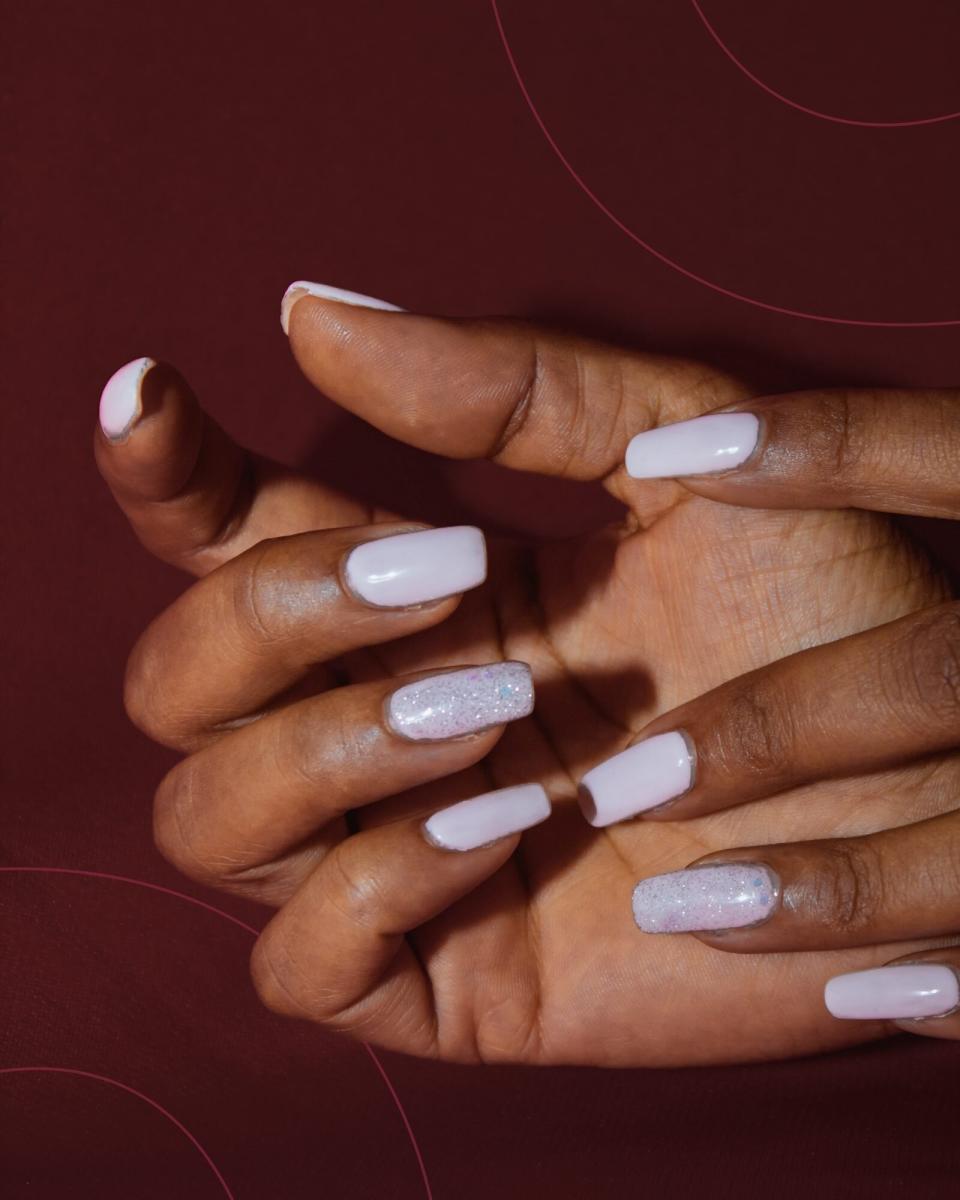Gel Nails vs. Shellac Nails: Which Long-Lasting Manicure Is Better?

Alazar Kassahun/Unsplash
The promise of a shiny, chip-free manicure for up to two weeks is exactly why the gel manicure remains one of the most popular choices at nail salons. The long-lasting polish holds up against things such as washing dishes, not to mention it doesn't require any drying time at the salon.
Deciding on polish color, nail art, and nail shape aren't the only choices to make when getting gel nails. You might even be asked whether you want a Shellac or gel manicure or told that the salon only offers one versus the other.
So what's the difference between gel nails and Shellac nails, and which option is better? Ahead, experts clear up the confusion.
RELATED: A Comprehensive Guide to Every Type of Manicure
What Is a Gel Manicure?
This type of manicure is performed with gel polish, a long-lasting formula that's cured with a UV light to make the polish stay shiny and chip free for days.
"The UV light immediately adheres the gel to your nail bed by hardening with a thirty second to one minute dry time," says Jennifer Bell, Senior Marketing Manager at Bellacures.
Bell says there are two types of gels that are popular at nail salons today: soft gel and hard gel. "Soft gels have a thinner makeup, and can be soaked off with acetone," she explains. "Hard gels are just that — much harder and thicker. While they last much longer than a soft gel application, they do require professional removal."
What Is a Shellac Manicure?
Shellac is a patented brand name of gel polish created by CND in 2010. "It combines the best features of a polish with the best features of a gel: a fully removable hybrid UV-Cured nail color," says CND Education Ambassador Tamara Di Lullo.
The benefits of a Shellac manicure include over 14 days of glossy, chip-free wear, no drying time at the salon, and easy removal that doesn't damage nails.
To ride out the life of your Shellac manicure as long as possible, Di Lullo recommends avoiding harsh solvents (like cleaning products) and treating the cuticles with a nourishing oil like CND's Solaroil. "It contains jojoba oil and vitamin E ,and keeps Shellac flexible and chip free — not to mention gorgeously hydrated cuticles," she says.
RELATED: How to Remove Your Gel Manicure Without Going to the Salon
What Are the Side Effects of a Gel Manicure?
A gel manicure will last much longer than one with traditional nail polish, but the service does have a few downsides. Namely, incorrect removal can result in nail damage. "The main way in which soft-gels can cause damage to your nails in the removal process," Bell says.
Soft gel is removed with acetone, and it's important not to pull or peel it off. "Allowing the polish to be soaked off and gently filed off manually is the best way to remove the polish safely, without causing any damage to your nail," Bell shares. "If the gel starts to lift, peeling the polish off is one of the worst options, as you can take a layer of your nail away with it."
For hard gel, you must go to a professional for removal. "While hard gel products, such as BioGel, cover the nail bed for a longer period of time, and allow the nail to grow out longer, they must be removed by a professional nail technician using an e-file," Bell says. "Since this product cannot be soaked off, attempting to remove it in any way on your own could result in some serious damage."
What Are the Side Effects of a Shellac Manicure?
While Shellac polish itself doesn't damage nails, incorrect removal does. "The main cause of nail damage I see is if the product is ripped or filed off the nail by an uncertified nail professional or the client themselves," Di Lullo says. "I usually say Shellac doesn't damage nails; humans do."
Gel polish is typically best removed with acetone, but CND makes a remover specifically for its Shellac formula that's designed to also hydrate the nails. Acetone is notoriously drying, which is why nail professionals recommend using a cuticle oil post-removal.
VIDEO: 10 Trendy Round Nail Designs That Will Convince You to Go Shorter
How to Choose Between a Gel Manicure and Shellac Manicure
Depending on what brands your nail salon carries, the choice may be made for you. And if that's the case, you'll end up with a shiny, long-lasting manicure either way.
However, if you have the option to pick between gel polish and Shellac polish, consider the current state of your nails and whether you'll be removing the manicure yourself at home or will have it done at the salon.
If you go with the former option, shellac may be the better option because it's typically easier to remove, which in turn, is less likely to cause damage. "There are a number of gel polish brands on the market, unlike CND Shellac which easily and safely can be removed with no nail damage, some gel polish brands can be much harder to remove and require scraping or filing of the natural nail plate," Di Lullo says. "That's why the whole category of gel polish sadly gets a bad rap."

 Yahoo Finance
Yahoo Finance 